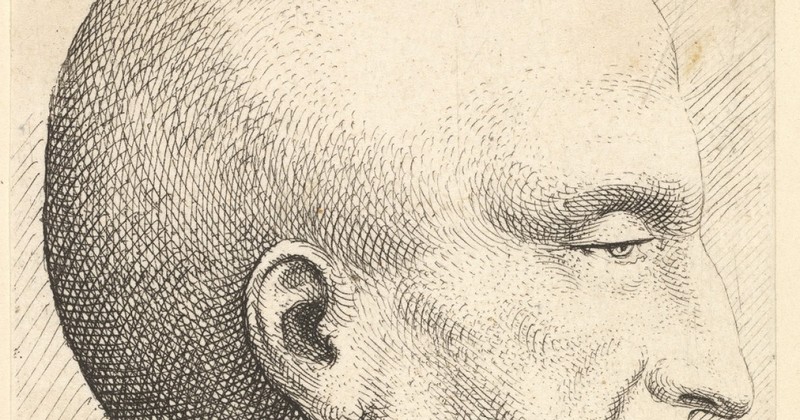Phalacrophobia (fear of baldness): symptoms, causes and treatments

An anxiety disorder whose symptoms are triggered by alopecia.
We live in a world where physical appearance is constantly judged by others. The clothes we wear, our weight, volume and physical shape and even the presence or absence of hair are elements considered of great importance in interpersonal relationships and even at work, leading to the creation of complexes if we do not meet the ideal of beauty or even in some cases to the suffering of different mental illnesses such as anorexia and bulimia. There are also some phobias linked to aspects of our physique.
One of them is phalacrophobiaOne of them is phalacrophobia, which we will talk about in this article, and which is related to an intense fear of baldness.
Phalacrophobia: what is this disorder?
We understand as phalacrophobia the existence of an exaggerated and an exaggerated and excessive fear towards baldnessThis fear generates a very high level of anxiety when exposed to stimuli related to this condition.
This is a specific type of phobia related to elements related to physical appearance. This implies the existence of a totally irrational and uncontrollable fear towards a specific stimulus, so that the symptoms are severe enough to constitute an anxiety disorder.
The fact of being exposed or even imagining exposure to such a stimulus generates such anxiety in the patient that it can trigger physiological symptoms such as tachycardia, hyper intonation, tremors, dizziness and even anxiety crises. This causes the subject to actively avoid exposure to the stimulus in question, or if exposed to it, to experience a high level of tension and discomfort.
In phalacrophobia, the fear in question can be of either both of the subject's own becoming bald and of the possibility of encountering bald subjects.. Thus, the subject may be in tension before social interaction with bald people, avoiding them. The presence of comments regarding Hair Loss or even publicity about it may also generate great anxiety and be actively avoided.
This fear is often associated with men, but the truth is that it is also experienced by many women.. It should be borne in mind in this regard that hair loss is socially expected in men, while it is not so common in women. This expectation may have an effect on the probability of suffering from phalacrophobia.
This phobia can have severe repercussions on the patient's life and even become an aspect with which the subject becomes obsessed. It is not unusual for the fear of going bald to lead to frequent checking routines, such as observation of the amount of hair lost when combing one's hair..
In extreme cases it has come to observe the existence of perceptive alterations (in a similar way to what happens in the anorexia), considering the subject to be losing the hair or to have stitches of the scalp if the in spite of conserving it perfectly healthy.
- Article related: "4 very frequent problems of self-esteem, and how to manage them".
Causes of this phobia
The origin as much of this as of other phobias is an element on which a great quantity of hypotheses exist, considering that its genesis is due to the combination of multiple factors.
In the present case, one of the possible explanations for this phobia is conditioning.. Some of the people who suffer from phalacrophobia have had some kind of traumatic experience during their childhood that was associated with baldness. For example, having been abused or mistreated by someone with alopecia, or having observed the death of an elderly or close loved one with this characteristic.
In these cases it is possible that the subject suffering from the phobia associates the fact of being abused or facing death with baldness, generating the exposure to this fact a high level of anxiety.
Another possibility is found in the fact that we remarked in the introduction: physical appearance. Although in recent times some people consider that baldness may represent manliness, strength and personality, the truth is that baldness is a sign of a man's manhood, strength and personality.culturally associated with physical decadence and has been distanced from the prevailing canon of beauty in society. society's prevailing canon of beauty. This could generate a learned fear of not being considered attractive and being socially rejected.
Linked to the two previous peppers, we must comment that hair loss has traditionally been considered as something typical of aging, implying the loss of youth and the capabilities of this time and entering a stage of loss and an approach to death.
Treatment
The treatment of this phobia is going to vary depending on the stimuli in question that generate anxiety..
The exposure to the phobic stimulus and the systematic desensitization are some of the most effective techniques in the treatment of phobias, being based on the approach of the subject to the phobic stimuli. First of all, a hierarchy will be drawn up between patient and professional in order to determine some of the main anxiety-generating situations, to organize them according to the anxiety they generate.
After this, the patient will be exposed to the feared situations, starting with situations that generate average levels of anxiety and exposing him/her to them until the level of anxiety decreases in at least two consecutive trials until it becomes imperceptible. After that, the next item in the hierarchy can be moved to the next one.
Another treatment to consider is cognitive restructuringwhich is very necessary in order to modify the dysfunctional beliefs that may be behind the emergence or maintenance of the phobia. Techniques such as decatastrophizing can also be used to reduce the importance of the possibility of going bald.
One last element that we can take into account is the possibility of using relaxation techniques in order to reduce the level of anxiety.
(Updated at Apr 14 / 2024)